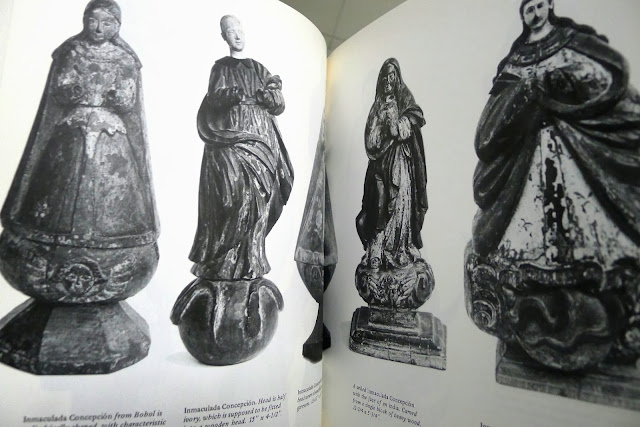I simply love Esperanza B. Gatbonton's A Heritage of Saints: Colonial santos in the Philippines. It's richly textured without sounding like a dissertation paper. And her collector's passion in her words is tempered by the need to elaborate and organize the different saints and relics that abound in the Philippines. This was published during the heyday of the 70s wherein religious antiques of great quality still can be found in the shops along Mabini and del Pilar. So, it is safe to say that this book is a product of the madness of antiquing during this period. Now, you would be consider lucky if you can find cheap yet authentic ivory pieces in the shops.
The book first delves into the history of the Filipino santos and the cult that it has spawned. From the conversion of the native heathens to Catholicism to the refashioning of the idols into household saints, it proves that our form of Christianity is still a part of our precolonial temperament. She also talks about the art and craftsmanship of the santero or saint-maker and also the specific saint types like San Roque (St. Roche) to San Vicente (St. Vincent). Her writing is vivid yet rich with details. More importantly, the pictures are there to remind you that your santos in the sala may or may not be the real thing. And those in the photos are those pieces that may have gotten away.
Books (unlike catalogs) specifically on antique santoses/saints are
really scant and rare. So far I have two out of the three better known works devoted to Philippine santos thanks mainly to the convenience of the web. I am still searching for a reasonably priced Fernando Zobel de Ayala's Philippine Religious Imagery (Ateneo de Manila Univ., 1963). A diligent search in the net is a must if you're truly passionate in collecting antiques. Not just for the objects but the books that delve into the subject. And Mrs. Gatbonton's book is a treasure indeed. And procuring one in near-mint condition is joyous indeed.




No comments:
Post a Comment